by Lorri | Apr 9, 2014 | Tips, UnCorked
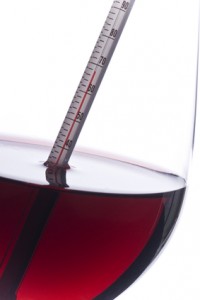 A liquid’s temperature plays a critical role in taste and smell. So much so that tasting a drink at the wrong temperature can ruin the experience. Just consider your reaction to warm, flat soda or room temperature coffee. Yuck, right?
A liquid’s temperature plays a critical role in taste and smell. So much so that tasting a drink at the wrong temperature can ruin the experience. Just consider your reaction to warm, flat soda or room temperature coffee. Yuck, right?
The same goes for wine. This is why some wine lovers tend to obsess about correct serving temperatures. Serving a wine at its ideal temperature brings out the wine’s depth of taste and aromas. Red wines that are served too warm lose fruit and structure leaving only the taste of tannin and alcohol. White wine served too cold rarely has any flavor at all beyond alcohol.
The only white wines that should be served very cold are the very inexpensive ones. Most of these wines are simple in their flavors and aromas.Sparkling wines and Champagne are also best when cold. Not only does the cold help retain bubbles when opening, but many people enjoy the wine’s texture when colder.
For other white wines and even expensive or mature bubbly, these are best served on the cooler rather than cold side, think 45 to 52 degrees. The reason it’s important is because if the wine is too cold, you lose all of the aromas and you are unable to appreciate the subtle, delicate aromas most of these wines offer.
When it comes to red wines, most of us have them sitting around on a wine rack at what we consider room temperature, but the old adage of serving red wine at room temperature doesn’t really apply. In reality, most of us keep our thermostats set between 68 to 75 degrees, depending on the time of year. This is far too warm for serving most red wines. But because lower temperatures will make a high-tannin wine like cabernet sauvignon even more tannic and bitter, it is wise to not serve them cold. Most red wines taste best served between 58 and 65 degrees. If you don’t have temperature-controlled storage for red wines, don’t be afraid to pop it in the refrigerator for a quick 5- to10-minute chill. If it’s summer, even placing the wine near an air-conditioning vent for a few hours will get the job done.
When dining out, it takes confidence to voice your opinion on what the wine’s temperature is when you are served. But your server needs to be aware of this issue. You wouldn’t think twice about pointing out a cold cup of coffee or undercooked food, and it should be the same with wine. Asking for an ice bucket for your white wine throughout dinner or one for a quick cool down of your reds can improve the overall enjoyment of your dining experience.
by Lorri | Feb 12, 2014 | UnCorked
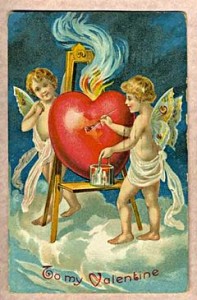 Valentine’s Day is Friday and if you’re stuck on what wine to buy, here are some ideas. With so many choices, I called local retailers for advice on what is trending for love birds.
Valentine’s Day is Friday and if you’re stuck on what wine to buy, here are some ideas. With so many choices, I called local retailers for advice on what is trending for love birds.
The most popular gift for female drinkers (with overwhelming consensus) was Champagne or anything that bubbles. I admit there is a special something about the celebratory feel bubbly offers. If you are looking to genuinely impress, consider finding vintage Champagne with a year special to your valentine, such as the year of your first date, wedding anniversary, major life accomplishment or first child. Brut (dry) rose bubbly was another popular recommendation. After all, what is more romantic than the pink or rosy color of flowers, candy and hearts?
For men and women alike, robust red full-bodied wine is another favorite for a valentine. I would recommend asking for assistance from your fine wine retailer. With the many styles available, sometimes knowing the story behind a vintage can aid in selection.
My favorite and most romantic of reds is the Calon Segur. The label of this prestigious property of Saint-Estephe has an elegant heart surrounding the name, making it an ideal choice for the occasion. It’s said that owner Marquis Nicolas-Alexandre de Segur claimed, “I make wine in Latour and Lafite but my heart is in Calon” as the reason behind the heart.
Consider an aged red wine rather than a bottle from the most recent vintage. I always find these wines offer an added romance of longevity and commitment to time.
THE VALUES
- NV Segura Viudas Brut Rose, Spain (about $12 retail)
- 2011 Maddalena Cabernet Sauvignon, California (about $19 retail)
THE SPLURGES
- NV Roederer Estate Brut, California (about $28 retail)
- 2010 Reynolds Family Winery Persistence Red, California (about $57 retail)
- NV Veuve Clicquot Yellow Label, France (about $68 retail)
- NV Moet & Chandon Imperial Rose, France (about $77 retail)
by Lorri | Feb 5, 2014 | UnCorked
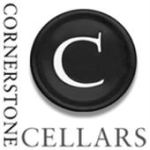 Recently Cornerstone Winery founder Dr. Michael Dragutsky and his wife, Beni, spent time in central Arkansas tasting and dining with other wine lovers. Living just up the road in Memphis, Dragutsky, when not practicing medicine full time, is promoting and sharing the story of his exceptional wines and mission.
Recently Cornerstone Winery founder Dr. Michael Dragutsky and his wife, Beni, spent time in central Arkansas tasting and dining with other wine lovers. Living just up the road in Memphis, Dragutsky, when not practicing medicine full time, is promoting and sharing the story of his exceptional wines and mission.
Cornerstone Cellars was established in 1991 when founders Dragutsky and Dr. David Sloas crushed their first cabernet sauvignon from Napa Valley’s Howell Mountain. Today Dragutsky and Sloas are joined by managing partner Craig Camp and winemaker Jeff Keene (as well as other Memphis-based partners).One shared goal, which Dragutsky speaks of with passion, is creating “compelling, exciting wines that speak clearly of the vintage and variety from which they were born,” believing “excellence is not enough.” He has overseen Cornerstone Cellars’ growth from the first year production of 300 cases to its diverse production in Napa Valley and Oregon with several varietals totaling more than 10,000 cases.
The care a winery dedicates to the production of its wines usually is an indicator of the quality in the glass. Cornerstone wines are created using “minimal, gentle wine making [techniques] relying more on nature than technology.” All of the grapes used are grown in organic or sustainably farmed vineyards. The winery offers a range fitting every wine drinker’s wallet, from “The Cornerstone,” a premier expression with only 90 cases produced (a blend of cabernet sauvignon, cabernet franc and merlot), to “Rocks,” a value-priced everyday drinking wine.
THE VALUES
- 2011 Stepping Stone Rocks White by Cornerstone, California (about $19 retail)
- 2011 Stepping Stone Rocks Red by Cornerstone, California (about $19 retail)
THE SPLURGES
- 2010 Stepping Stone Napa Valley Cabernet Sauvignon by Cornerstone, California (about $45 retail)
- 2010 Cornerstone Cellars Howell Mountain Cabernet Sauvignon, California (about $83 retail)
by Lorri | Jan 29, 2014 | UnCorked
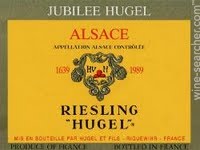 Over the past few weeks I have eaten at several new restaurants around the state and smiled as I saw the tried and true Riesling on each of the wine lists. Just as I have rallied readers to get on board with the rose revival, I think it is time to include Riesling in my aspirations. Riesling is one of the oldest white wine varietals but continues to live in the shadow of the ever-popular chardonnay, pinot grigio and well, almost any other white wine.
Over the past few weeks I have eaten at several new restaurants around the state and smiled as I saw the tried and true Riesling on each of the wine lists. Just as I have rallied readers to get on board with the rose revival, I think it is time to include Riesling in my aspirations. Riesling is one of the oldest white wine varietals but continues to live in the shadow of the ever-popular chardonnay, pinot grigio and well, almost any other white wine.
We all know Riesling had an image problem in America, with most styles being thought of as simple and sweet wine. But today things are changing dramatically, with more and more wineries refining the taste profiles that range from lusciously sweet to very dry.
Trying to decide which country produces the best Rieslings would spark an endless debate. There are excellent versions made around the world. The only demand this grape has on the vineyard is the need for a cool climate. Known as the classic regions for this grape, (and generally the best expressions) are France’s Alsace, Germany and, though rarely seen in our market, Austria. Other places offering terrific and generally under priced Rieslings are New York’s Finger Lakes, Washington state and Australia’s Claire Valley.
As I have written before, the key to buying great Riesling is paying attention to the label. Kabinett being the driest and Auslese the sweetest. Beerenauslese, Trockenbeereanauslese and Eiswein are always a dessert-style, lusciously sweet wine.
If you still need convincing, Riesling is an extremely food-friendly wine. It works well with the flavors of most foods, which is why we are seeing it more and more on the premium side of wine lists in restaurants around Arkansas. Its classic partners are dishes with creamy sauces, veal and the spiciness and sweetness of Asian food. We all have different tastes, but my only experiences with Riesling and a not so good pairing was with some Mediterranean flavors like olive oil, garlic, tomatoes and rare beef.
THE VALUES
- 2011 Rudi Wiest Mosel River Riesling, Germany (about $15 retail)
- 2011 Snoqualmie Naked Riesling, Washington (about $13 retail)
THE SPLURGES
- 2011 Hugel Alsace Riesling, France (about $28 retail)
- 2011 Trimbach Riesling, France (about $27 retail)
by Lorri | Jan 22, 2014 | UnCorked
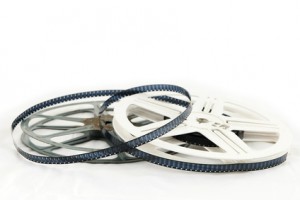 As you would assume, wine is everywhere in my life, in writing, tasting, reading – even movie watching. It has been exciting over the last decade to see more and more movies not just with wine in the background, but with the world of wine being a major theme. I admit to not being a movie critic, but these are a couple of my favorites to consider adding to your movie library. Of course watching with a great glass of wine in hand makes the experience even more enjoyable.
As you would assume, wine is everywhere in my life, in writing, tasting, reading – even movie watching. It has been exciting over the last decade to see more and more movies not just with wine in the background, but with the world of wine being a major theme. I admit to not being a movie critic, but these are a couple of my favorites to consider adding to your movie library. Of course watching with a great glass of wine in hand makes the experience even more enjoyable.
Bottle Shock (2008) may be my favorite wine movie of all time. Having the infamous 1976 Judgment of Paris made into a movie should make any American wine consumer proud. The story is of the early days of California wine making, when most people didn’t have any idea of the world-class wine California was producing.
It all changed when a Paris wine retailer, alongside Britain’s Steven Spurrier, organized a unique and original blind wine tasting: California versus France. California wines were brought against not only historic wine greats, but also the discerning taste of the world’s most elite palates. The blind tasting, not revealing producers, gave California an overall rating of superior when the winners were announced: a 1973 Stag’s Leap Cabernet Sauvignon and a 1973 Chateau Montelena Chardonnay.
You can only imagine the reaction across the globe from the outcome of this competition. The movie focuses on the story of Chateau Montelena’s amazing beginnings with the experiences of a small production winery in the 1970s struggling with business, a pretentious global industry, a bottle shock adventure and, as with all great movies, layers of evolving relationships.
Somm (2012) is a more-recent release that received mixed reviews from wine critics, but it is one of my favorites. The documentary follows four men who practically put their lives on hold to study for the Master Sommelier Exam.
I’ve been asked many times to explain the complicated process of studying for Master of Wine (MW) or Master Sommelier (MS). From my years of studying through the Diploma of Wines and Spirits, a prerequisite for the MW program, this movie hits home, down to my many maps taped to mirrors, flashcards being read at stop lights and the support of family and study group peers.
If anyone is interested in better understanding the commitments of these types of programs, this movie is a front-row seat to the experience. The movie illustrates the dedication and competitiveness on level with medical school or law school, necessary to become a master sommelier. At this level about the only thing separating the students is wine.
This is not a movie to watch with anyone who is not equally a wine geek. But it does offer a rare glimpse into the world of wine and service credentials. My main disappointment in the movie was that no women were featured on the path to the exams.
by Lorri | Jan 15, 2014 | UnCorked
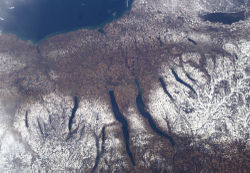 Many wine lovers tend to stick within their comfort zones, flocking to well-known vineyards in California, but the United States has many regions on the rise worth exploring.
Many wine lovers tend to stick within their comfort zones, flocking to well-known vineyards in California, but the United States has many regions on the rise worth exploring.
Finger Lakes in west-central upstate New York is such a region. Jim Trezise, president of the New York Wine and Grape Foundation wrote it best: “This is a 50-year overnight success.”
The region’s popularity got a jump-start when its wines were served at President Barack Obama’s 2013 inaugural luncheon, as well as receiving rave reviews in Wine Spectator. Early last year the magazine had a tasting and analysis of more than 325 Finger Lake wines.The results were a lot to brag about, with more than two thirds receiving 85 points or higher on the Wine Spectators 100-point scale and 28 wineries awarded the prestigious over-90-point rating.
The Finger Lakes wine industry built its foundation on native grapes like the Concord. These were ideal candidates for thriving in the region’s cold winters and cool summers. Most grapes were used for jelly and juice production and only a small amount made it into the wine bottle. The wines were generally sweet and were sold locally or in the tasting rooms. But over the last decade, vineyards have turned to growing varietals more consumers recognize and critics review. Many are the classic grape varietals like pinot noir and cabernet franc or whites that like cool weather like Riesling, gewurztraminer and chardonnay.
If you haven’t tasted a New York wine you’re in for a treat as more wines from this area become available in Arkansas.
THE VALUE
- 2011 Red Tail Ridge Winery Chardonnay, New York (about $10 retail)
THE SPLURGE
- 2011 Red Tail Ridge Winery Dry Riesling, New York (about $17 retail)
 A liquid’s temperature plays a critical role in taste and smell. So much so that tasting a drink at the wrong temperature can ruin the experience. Just consider your reaction to warm, flat soda or room temperature coffee. Yuck, right?
A liquid’s temperature plays a critical role in taste and smell. So much so that tasting a drink at the wrong temperature can ruin the experience. Just consider your reaction to warm, flat soda or room temperature coffee. Yuck, right? Valentine’s Day is Friday and if you’re stuck on what wine to buy, here are some ideas. With so many choices, I called local retailers for advice on what is trending for love birds.
Valentine’s Day is Friday and if you’re stuck on what wine to buy, here are some ideas. With so many choices, I called local retailers for advice on what is trending for love birds. Recently Cornerstone Winery founder Dr. Michael Dragutsky and his wife, Beni, spent time in central Arkansas tasting and dining with other wine lovers. Living just up the road in Memphis, Dragutsky, when not practicing medicine full time, is promoting and sharing the story of his exceptional wines and mission.
Recently Cornerstone Winery founder Dr. Michael Dragutsky and his wife, Beni, spent time in central Arkansas tasting and dining with other wine lovers. Living just up the road in Memphis, Dragutsky, when not practicing medicine full time, is promoting and sharing the story of his exceptional wines and mission.
 As you would assume, wine is everywhere in my life, in writing, tasting, reading – even movie watching. It has been exciting over the last decade to see more and more movies not just with wine in the background, but with the world of wine being a major theme. I admit to not being a movie critic, but these are a couple of my favorites to consider adding to your movie library. Of course watching with a great glass of wine in hand makes the experience even more enjoyable.
As you would assume, wine is everywhere in my life, in writing, tasting, reading – even movie watching. It has been exciting over the last decade to see more and more movies not just with wine in the background, but with the world of wine being a major theme. I admit to not being a movie critic, but these are a couple of my favorites to consider adding to your movie library. Of course watching with a great glass of wine in hand makes the experience even more enjoyable. Many wine lovers tend to stick within their comfort zones, flocking to well-known vineyards in California, but the United States has many regions on the rise worth exploring.
Many wine lovers tend to stick within their comfort zones, flocking to well-known vineyards in California, but the United States has many regions on the rise worth exploring.